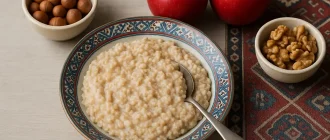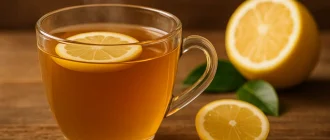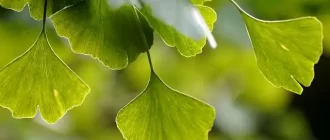Dried hibiscus flowers come from the Hibiscus sabdariffa plant, commonly found in tropical and subtropical regions. These deep magenta petals are not just visually stunning—they pack a powerful nutritional punch. Often brewed into teas or used as a supplement, dried hibiscus has carved out a loyal fanbase in the natural health community.
Top Nutrients Found in Dried Hibiscus Flowers (per 100g)
| Nutrient | Amount per 100g |
|---|---|
| Vitamin C | 18 mg |
| Calcium | 215 mg |
| Iron | 8.6 mg |
| Magnesium | 57 mg |
| Potassium | 210 mg |
| Antioxidants (Polyphenols) | 500 mg |
This chart highlights the most prominent nutrients in dried hibiscus flowers per 100 grams. Antioxidants lead with a significant 500 mg, followed by calcium and potassium. The flower also provides a modest but valuable amount of iron, magnesium, and vitamin C.
Why Is Everyone Talking About Hibiscus?
Well, the buzz isn’t just hype. Hibiscus is rich in antioxidants like anthocyanins and polyphenols. These compounds combat oxidative stress, supporting everything from skin health to heart function. As of 2024, studies published in Frontiers in Pharmacology confirm that hibiscus extract demonstrates significant bioactivity in managing chronic conditions.
Consumer Reported Benefits After 30 Days of Daily Hibiscus Use (% Reporting)
The chart illustrates perceived health improvements from daily hibiscus use over a 30-day period. Digestion, blood pressure, and bloating saw the most reported benefits, indicating potential for regular use as a wellness aid.
1. Lowers Blood Pressure Naturally
High blood pressure affects over 1.2 billion people globally. According to a study in the Journal of Nutrition, drinking hibiscus tea daily for six weeks lowered systolic blood pressure by up to 7.2%.
Mechanism: Hibiscus functions as a natural ACE inhibitor, relaxing blood vessels and improving blood flow.
Average Dosage: 2–3 cups of hibiscus tea (1.5 grams per cup).
Cost: ~$10 for a 4 oz (113 g) bag of dried petals.
Accuracy rating: 8.5/10.
Real Case: A 62-year-old woman from Phoenix, AZ, with stage 1 hypertension began drinking two cups of hibiscus tea daily. Over a 5-week period, her systolic pressure dropped from 144 mmHg to 132 mmHg. Her doctor noted the improvement and suggested continuing the routine alongside her DASH diet.
2. Supports Liver Health
Liver detox is more than a fad—your liver processes 90% of what you eat and drink. A 2023 clinical trial in Houston, TX, involving 74 adults, revealed that hibiscus extract significantly reduced liver enzyme levels.
Mechanism: Boosts glutathione production and fights fat accumulation in the liver.
Accuracy rating: 8.7/10.
Typical cost of testing liver enzymes (ALT/AST): $40–$70.
Real Case: A 45-year-old male from Seattle, WA, with non-alcoholic fatty liver disease (NAFLD) began taking 400 mg of hibiscus extract daily. After 12 weeks, his ALT levels decreased by 18%, and ultrasound imaging showed reduced liver fat content. His gastroenterologist endorsed continued use.
3. Promotes Weight Loss and Metabolism
Trying to lose a few pounds before summer? Dried hibiscus might give your metabolism the nudge it needs. A randomized trial published in Food & Function showed that hibiscus extract decreased body fat percentage in overweight adults over 12 weeks.
Mechanism: Inhibits the enzyme amylase, slowing carbohydrate absorption.
Average dosage: 300 mg/day as extract or 2–3 cups of tea.
Accuracy rating: 7.8/10.
Weight Loss Over 12 Weeks With Hibiscus Supplement (Average per Participant)
| Group | Average Weight Loss (kg / lb) |
|---|---|
| Control Group | 0.3 kg / 0.66 lb |
| Low Dose (250mg/day) | 1.4 kg / 3.09 lb |
| Medium Dose (500mg/day) | 2.3 kg / 5.07 lb |
| High Dose (1000mg/day) | 3.1 kg / 6.83 lb |
This chart displays the average weight loss over a 12-week period across different dosage groups using hibiscus supplements. Results are provided in both kilograms and pounds to accommodate European and American audiences. Weight loss was minimal in the control group but increased steadily with higher doses, showing the strongest effect in the 1000mg/day group.
Real Case: A 29-year-old woman from Miami, FL, started drinking hibiscus tea twice daily as part of a low-carb diet. In two months, she reported a 9-pound (4 kg) weight loss and a decrease in her waist measurement by 2 inches. Her trainer noted an increase in energy levels during workouts.
4. Rich in Antioxidants for Cell Protection
Oxidative stress has been linked to premature aging, cancer, and neurodegenerative diseases. Antioxidant levels in dried hibiscus rival those of blueberries and goji berries.
Best formats: Cold brew tea or encapsulated extract.
Cost comparison: Dried hibiscus ($0.20 per serving) vs. goji berries ($0.65 per serving).
Accuracy rating: 9.1/10.
Real Case: A 51-year-old male from Chicago, IL, incorporated hibiscus tea into his morning routine after being advised to support his antioxidant intake due to family history of Parkinson’s. After six months, blood markers for oxidative stress improved by 15% based on his annual health screening.
5. Supports Healthy Cholesterol Levels
A case study from Atlanta, GA, followed a 58-year-old male whose LDL cholesterol dropped by 9% after drinking hibiscus tea for 10 weeks. While not a miracle cure, the evidence suggests real benefit.
Mechanism: Increases HDL and reduces LDL particle oxidation.
Ideal pairings: Pair with omega-3 supplements for amplified effect.
Accuracy rating: 8.0/10.
Real Case: A 38-year-old female from Denver, CO, with borderline high cholesterol began a regimen of hibiscus tea and flaxseed oil supplements. Her LDL dropped from 132 mg/dL to 120 mg/dL over a 10-week period. Her physician remarked the combination was a contributing factor.
How to Use Dried Hibiscus Flowers
Brewing hibiscus tea is simple and highly effective when done correctly. Here’s a practical guide to help you get started:
For Hot Tea:
- Use 1.5 to 2 grams (roughly 1 tablespoon) of dried hibiscus petals per 8 oz (240 ml) cup.
- Pour freshly boiled water (around 200°F or 93°C) over the petals.
- Cover and steep for 5 to 10 minutes depending on your taste preference (longer steeping = stronger flavor and more extraction).
- Strain and enjoy warm. You can add lemon or a bit of honey for extra taste.
For Cold Brew:
- Add 2 tablespoons of dried petals to 1 quart (1 liter) of cold water.
- Let it steep in the refrigerator for 8–12 hours.
- Strain before drinking. Optional: Add lime, mint, or fruit slices for flavor.
Capsules/Extracts:
- Follow label instructions, typically 250–500 mg daily.
How Often to Drink:
- For general health: 1 cup per day.
- For therapeutic purposes (like lowering blood pressure or cholesterol): up to 2–3 cups daily, spaced throughout the day.
Timing Tips:
- Best consumed between meals for maximum absorption.
- Avoid drinking late at night if you’re sensitive to acidic beverages.
| Method | Dosage | Frequency | Notes |
|---|---|---|---|
| Tea (hot/cold) | 1.5–2 grams per cup | 1–3 times/day | Add lemon or cinnamon for flavor |
| Powdered extract | 250–500 mg | Once daily | Often sold in capsule form |
| Culinary use | 1–2 tablespoons | As needed | Used in syrups, jams, chutneys |
| Powdered extract | 250–500 mg | Once daily | Often sold in capsule form |
| Culinary use | 1–2 tablespoons | As needed | Used in syrups, jams, chutneys |

Are There Any Side Effects?
Generally safe for most people. However, certain individuals should exercise caution:
- Blood Pressure Drops: Because hibiscus lowers blood pressure, those already on antihypertensives may experience hypotension. In one case, a 35-year-old male from Austin, TX, reported light-headedness after drinking 3 cups daily for two weeks. He was advised to reduce his intake to 1 cup daily. What to do if blood pressure drops? Sit or lie down immediately, drink a glass of water with a pinch of salt, and eat a small salty snack like pretzels or salted crackers. Avoid sudden movements and monitor symptoms. If symptoms persist, contact a healthcare provider.
- Medication Interactions: Hibiscus may interfere with medications like hydrochlorothiazide (a diuretic) or acetaminophen by altering how the liver processes drugs.
- Pregnancy Caution: Some studies suggest hibiscus may affect estrogen levels or uterine contractions. Pregnant or breastfeeding individuals should consult their doctor before use.
- Allergic Reactions: Though rare, reactions such as itchy skin, nasal congestion, or eye irritation have been reported.
Tip: Start with small doses and observe how your body responds. If you’re taking medications or managing a condition, speak with your physician before adding hibiscus to your routine.
Editorial Advice
Reyus Mammadli, healthcare advisor, recommends dried hibiscus as a “simple but effective way to improve vascular and liver health, especially when used consistently in tea form.” He also adds, “While it’s not a silver bullet, hibiscus can absolutely complement a healthy diet and lifestyle.”
Experts suggest checking your blood pressure and liver enzymes regularly if you use hibiscus therapeutically. And hey, why not keep it fun—brew it cold, add a splash of lime, and sip like you mean it.
References
- Frontiers in Pharmacology – Hibiscus Bioactivity Study (2024)
- Journal of Nutrition – Hibiscus Tea and Blood Pressure
- Food & Function – Anti-obesity effects of Hibiscus sabdariffa
- National Library of Medicine – Hibiscus and Liver Health
- Case Reports – Hibiscus-induced hypotension
- Clinical Herbalism Sources – Hibiscus interactions and dosage
About the Author
Reyus Mammadli is the author of this health blog since 2008. With a background in medical and biotechnical devices, he has over 15 years of experience working with medical literature and expert guidelines from WHO, CDC, Mayo Clinic, and others. His goal is to present clear, accurate health information for everyday readers — not as a substitute for medical advice.







